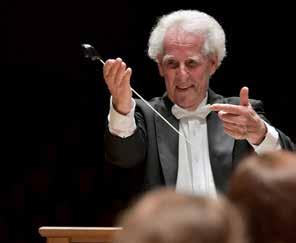



















The minimum suggested size for the photos is 4500 x 2700 pixels.
Image resolution is best reviewed in “Preview” mode.
This month, Social Security turns 89. In the fabric of society, few programs have woven themselves as deeply into the American culture as Social Security. The economic devastation of the Great Depression further exposed society’s vulnerabilities, with millions of older Americans in poverty and many more at risk of financial ruin. In response, the Social Security Act was signed into law to better ensure a measure of income security for older Americans in retirement.
For more information about photography and usage rights, please review the Local Photography Guidance & Rules One-Sheet on InfoNet.

Become an AARP Massachusetts volunteer and be part of a powerful force for good, protecting the rights and well-being of people 50-plus and their families. Use your time and talent to write letters, advocate online or in person, participate in events, and meet with decision-makers.

Over the subsequent decades, it has matured into a vital source of guaranteed, inflation-adjusted income for millions of retirees who pay in and earn their Social Security through payroll taxes they and their employers contribute throughout their working lives. Social Security also enjoys widespread support across all ages and demographic groups.
Today, nearly 1.3 million Massachusetts residents receive Social Security. Most of those age 65 or older count on Social Security as their largest source of income, and about 25% of households rely on Social Security for 90% or more of their income.
With 90% of people saying Social Security is important to their retirement security, it is instructive to understand how it was created and how it has evolved over time.
Here’s a timeline of significant events in the history of Social Security.
Aug. 14, 1935: President Franklin Roosevelt signed the Social Security Act into law.
Aug. 10, 1939: The program was broadened to include benefits for workers’ dependents and survivors.
October 1950: Congress authorized the first cost-of-living adjustment (COLA), an increase of 77 percent.
Giving back. Making friends. Changing lives. Volunteer opportunities with AARP—a nonprofit, nonpartisan organization—are open to people of all ages. Find your place at aarp.org/volunteerhere



September 1960: President Eisenhower signed a law amending the disability rules to permit payment of benefits to disabled workers of any age and to their dependents.
June 30, 1961: All workers are now allowed to retire early at age 62, albeit at a reduced Social Security benefit. Previously, benefits could not be claimed until the normal retirement age (NRA) of 65.
Oct. 30, 1972: President Nixon signed the Social Security Amendments making the cost-of-living adjustment automatic each year,
April 20, 1983: President Ronald Reagan signed into law sweeping changes to Social Security aimed at addressing the imminent Social Security funding gap. These included moving up scheduled increases in the payroll taxes that fund Social Security, gradually raising the normal retirement age to 67, and making 50 percent of Social Security benefits taxable for recipients with incomes above $25,000 for an individual and $32,000 for married couples filing jointly.
Aug. 10, 1993: President Bill Clinton signed the Omnibus Budget Reconciliation Act, a large deficit reduction package of tax increases and spending cuts that included a provision raising the share of Social Security benefits subject to income tax from 50 percent to 85 percent for beneficiaries with incomes above $34,000 (single) or $44,000 (couple).
The QR code seen on this template must be deleted or changed. QR codes must be created in the Beaconstac platform using your AARP account. Download either .jpg or .png format for use in the template.
May 6, 2024: According to the Social Security Trustees report, Social Security can pay full benefits until 2035. That doesn’t mean Social Security payments would end, but they would be funded only by each year’s payroll tax revenue. The Trustees estimate that would cover about 83 percent of scheduled benefit payments.
The history of Social Security is a testament to the promise between the government and its citizens. From its humble beginnings during the Great Depression, Social Security has stood the test of time, having never missed a payment, providing a foundation of retirement security to generations of Americans.
For information about licenses, training and support, review the QR Code Guidance on InfoNet or contact BrandHelp@aarp.org.
By Maureen Sullivan ContriButing Writer
WESTBOROUGH – David Wong thumbed his way through his phone.
Hundreds of photos — decades worth of family, friends and places.
After a few minutes, Wong found what he was seeking — a photo of himself as a young man, fresh from Hong Kong, starting his career as a bartender at the Honolulu on Turnpike Road.
“I started at the Honolulu in 1976,” he said.
His brother-in-law taught him bartending, enough for Wong to take over in Westborough while he went over to the Honolulu in Norwood.
“It took me six months to learn,” said Wong, adding that he was learning English at the same time.
For nearly three decades, a distinctive exotic tiki head beckoned travelers along Turnpike Road to dine at the Honolulu restaurant.
Originally the Eli Whitney Steakhouse, the site was sold to Hing Wah of Brookline in 1970. It was remodeled and renamed, and offered a menu of

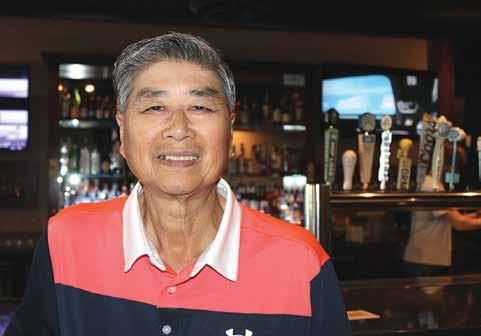
American, Chinese and Polynesian fare.
According to those who recalled the Honolulu, the restaurant became known for its cuisine and mai tais.
In addition to the sign, the tiki was

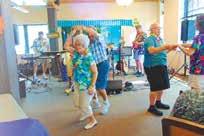
We offer worry-free living at affordable rates in private apartments with services available such as:
•Daily social activities & programs
•Three chef-prepared meals daily
•Assistance with personal care needs
• Medication reminders
•Laundry & housekeeping services
•Safety checks
•Dedicated, caring staff 24/7

For more information or to schedule a tour, call Kristy Livingston at (978) 632-8292 or email info@hwcommons.com .
featured on mugs and swizzle sticks.
When the Westborough Honolulu closed in October 2000. Wong later joined Westborough House of Pizza. When the COVID-19 pandemic hit in the spring of 2020, Wong found
himself out of work.
“I stayed at home for two years,” he said.
When the pandemic eased, Wong said he wanted to go back to bartending.
“I hadn’t lost the skill,” he said. “I’m happy here … all my friends are here,” he said.
Now Wong is putting away his cocktail shaker after nearly 50 years. He retired on the first weekend in June.
The Westborough resident said he plans on traveling with his wife to see the grandchildren and play golf every day.
Wong is also breaking in a new bartender.
“I’ve known Mr. Wong since I was 5 years old,” said Sean Keaveney, who was born and raised in town. “No one can really replace Mr. Wong.”
Wong, who has lived in Westborough for 45 years, said the biggest changes have been taxes (“I paid only $800 a year in taxes when I first bought my house,” he said), the population growth and lots of new houses.

By Matt roBinSon ContriButing Writer
CAMBRIDGE – During his days serving as a janitor in Cambridge’s city hall, Lenny Clarke may not have seen himself making it as a stand-up comedian.
However, it has been his willingness to do what is necessary that has served him so well as a comedian and in so many other aspects of his life.
“When I was a janitor working my way through college,” Clarke recalled, “people would encourage me to run for office!”
Political connections
Though he was not aware that at least not all of his apparent backers were serious, Clarke was willing to take on the challenge and entered a crowded field in the race for mayor of Cambridge.
“When I didn’t win, I was assigned to clean garbage trucks,” Clarke remarked, noting that he was not “promoted” to his former job until

he promised not to run again.
Even though he might have stepped away from politics, Clarke’s political connections continued to
•
•
•
•
•
• Bunions/Corns
Cambridge native Lenny Clarke was part of the 1980s “Boston comedy wave” that launched many careers, and has gone from doing standup comedy in bars to appearing in numerous TV shows and movies. (Photos/ Submitted)
that my father was out of insurance from his job….So I called Tip O’Neil!” O’Neil, a Cambridge native and career politician at both the state and federal level, famously served as Speaker of the U.S. House of Representatives for a decade during the seventies and eighties.
After explaining to the legendary politician that the wait to be considered for the local veterans home was three years, Clarke promised to support the future Speaker of the House however he could.
“Five minutes later, [O’Neil] called back and told us my dad had been admitted to the veterans home the next day!” Clarke recalled, still brightening at the news. “I ended up working for him every time he ran.”
Later, when O’Neil held court on the Merv Griffin Show, Clarke once again asked him for a favor.
come in handy.
“One day, I came home and my mother was crying,” the third of eight children remembered. “She explained
“I asked him to get me on Merv,” Clarke explained. “He said he wanted to see me perform and invited me to perform at his St. Patrick’s Day party.”

One day, I came home and my mother was crying…. She explained that my father was out of insurance from his job. … So I called Tip O’Neil! Five minutes later, [O’Neil] called back and told us my dad had been admitted to the veterans home the next day!
Lenny Clarke
And though O’Neil introduced him to the politically-charged hall as “Larry Clarke,” Clarke quickly commanded the room and made an impression that may have launched his career.
“From there, I decided to work on comedy,” Clarke explained, recalling regular gigs at what was then known as The Springfield Street Saloon.
“I saw Steve Sweeney there,” Clarke said, citing another early influence who became a dear friend and staunch supporter, “and performed and got a standing ovation and I never looked back!”
After touring as part of the Leno and Clarke Expedition with fellow Massachusetts comic Jay Leno, Clarke came back to the Bay State. He wanted to try to build the scene here so that he and his fellow comics did not have to go to New York City or further afield just to make a living.
With the help of Sweeney, Barry Crimmins and his brother (now manager) Mike, Clarke turned the Springfield Street Saloon into the Ding-Ho Chinese restaurant and launched the legendary Boston comedy wave of the 1980s there.
“I was nuts,” he suggested, “and that was where the nutty people were!”
From Bill Burr and Dane Cook to Paula Poundstone and Steven Wright, the Ding Ho became the birthplace of many of comedy’s most storied careers.
“We insisted that each show had new material.” Clarke noted, “and it pushed people to come up with new stuff all the time.”
The success of the club led to Clarke being offered a gig on WSBKTV 38 where he would show horror movies and do comedy bits at the ad breaks.
“I loved TV,” he said, “mainly because they can’t throw anything at ya!”
And though he has since played to a sold-out crowd at Boston Garden
and appeared in a wide range of television shows and movies, Clarke always holds a special place in his heart for the place that started him off.
“If I could do my life over,” he muses, “I’d be an F-1 driver, but if I could go back in time, I’d go back to the Ding Ho!”
In addition to making people laugh, Clarke said he loves his job because it gives him the opportunity to give back to his community and to help other people.
As two of his sisters and many of his friends are dealing with multiple sclerosis, Clarke regularly participates in and performs at fundraising events that support research for the debilitating condition and has pushed himself to be part of their 150-mile bike rides year after year.
“As long as I don’t finish last, it’s good,” he reasoned, “but even if I did, it’s still good.”
He has even taken up skiing so he could participate in events for cystic fibrosis and is always up for anything that can support children, including emceeing events for Boston Children’s Hospital.
“My charity work is what made my parents the most proud of me,” he said, tearing up a bit. “It’s easy to write a check, but to donate your time, you got to prepare and be on time and stay to the end and be into it to make it work.”
As much as he gives for people in need, Clarke was also very much in need himself a while ago when he suffered a stroke in his Martha’s Vineyard home and had to be helicoptered to Mass General. And even though he temporarily lost his speech (and so his livelihood), Clarke is speaking out about health to anyone who will listen as even he realizes that it is no joke.
“A lot of people who have had strokes do not like to talk about it,” he observed, “but I talk about it because I want to help people.”
“I’m still bangin’ away,” the 70-year-old Clarke said proudly, “but I’m playing with house money, so people should go see me because they never know when it’s my last show.”
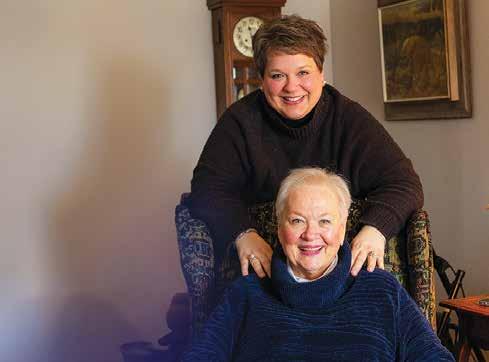
1. How did you make the decision to move your mom to the Willows? (Erin) Mom had started to have a couple of health and mobility issues that grounded her... we knew that driving was going to be tricky so, while she was in respite, we began looking.
2. Was location key to your selection of the Willows? (Erin) Yes, we love New England. Mom said to me, “Erin, where are we going to go to make our memories? We have always loved the Boston area... she said to me, “Let’s go home so we can spend this chapter doing the things we both love”
3. Were you surprised to learn about all the choices you would face? (Erin) There’s no handbook for how to help a parent with this transition. We wanted to find a place that would help her handle all of the changes that come with aging. Whatever the next phase is, the goal is to age in place for as long as you can in the quality and the surroundings you love .
4. What makes you feel at home at the Willows? (Ginger)
It’s so clean here. This place has character. It’s not all new and chrome. This is my kind of place. I’ve met a lot of nice people. It fits us and we fit it... and the staff is so accommodating and so quick to respond.
5. What lesson did you learn about selecting a senior living facility? (Ginger) Had I been thinking about it, maybe I would’ve looked into it in my 60’s, not that I was ready for it at all, but for me to do the work to come to a place like the Willows. To say ‘all right,’ what am I looking at when I’m 80? Start looking at these places, just start to prepare. It’s important to know what your options are.
Your best life starts here. Because here, you’re


By MiChael Perna ContriButing Writer
WORCESTER – In 1943, Paul Aboody, who was the son of Lebanese immigrants, purchased a small barbershop in a three-decker house at 73 Wall Street on what is now called Grafton Hill in Worcester.
Restaurant origins
Aboody, who had unsuccessfully tried running a number of small coffee shops around the city while working full-time at the Wyman-Gordon Company, used the former barber shop location to house a small restaurant on the first floor, which he named the El Morocco. His wife, Helen, made delicious pastries which quickly became popular with local residents. This was followed by a selection of various Lebanese dishes, with the “El,” as it became known, being the first restaurant in the area to offer this type of food.
Despite its tiny size and the fact that patrons had to bring their own alcoholic drinks, the “El” became a well-known spot. Helen continued to play an instrumental role in the business, while still raising the nine children the couple eventually had.
Jazz haven and star magnet
Within a short time, the “El” began to feature jazz musicians, which only added to its popularity. It became a hot spot for local nightlife, with patrons routinely staying until five a.m. In 1945, the cellar of the building was dug out, which allowed eighty-five more patrons to visit. Soon entertainers from all over, who had performed in the city, would stop by after their shows. Looking towards the future, Aboody purchased a parcel of land across from the business in 1948.
Over the years, famous patrons included Dolly Parton, Wayne Newton, Al Pacino, the Beach Boys, Harry Belafonte, Nat King Cole, Dizzy Gillespie, Neil Sedaka, and Bette Midler, in addition to Worcester’s own Abbie Hoffman. Many of these celebrities joined the local jazz groups for impromptu late-night performances, to the delight of the local patrons.
In 1972, Al Pacino, then a little-known actor, was in Worcester to attend a screening of his new movie and help promote it. The film was “The Godfather,” which became one of the most acclaimed movies of all time, and catapulted Pacino to stardom. The theater manager, Johnny Dee, took Pacino to
Hearing aids are medical devices. They should be fitted by a professional to ensure optimal hearing.
• We are very experienced licensed audiologists who have been in business for 37 years. We actually care about you hearing better.
• Before you purchase hearing aids online, over the counter, from a big box store, or a TV ad, give us a call and make an appointment for a CONSULTATION.
• You may just discover you can get hearing care, AND hearing aids from LOCAL professionals for reasonable or the same pricing
• Give us a call at one of our three locations before you commit.








of the Aboody family)
the El Morocco after the screening for a party in his honor. Joe Aboody even baked a special cake for the occasion.
Second location
By 1976, business had grown tremendously, and a liquor license was finally secured. By the next year, construction began on a brand-new restaurant that was built across from the old “El.” The new restaurant opened in December 1977, with
a crowd estimated to be 5,000 people waiting for the doors to open.
The new restaurant, although still popular, was never quite the same hot spot as the little place across the street. Late night parties and appearances by celebrities dropped off over time. When Paul Aboody passed away in 1983, operation of the “El” was turned over to his eight surviving children (one had passed away years earlier).


Decline and legacy
As sometime happens in such cases, financial troubles began, despite business still being good — revenue in 1992 reportedly was more than $1 million. By 1994, the building was sold, due in large part to the continuing problems between family members.
New owners made an attempt to open a restaurant/night club, named Il Palazzo, in January 2000, however by May of that year, an attempted robbery resulting in the murder of the manager effectively marked the end
of operations. The building was foreclosed upon in 2001.
The building housing the original El Morocco was torn down in 2003. A proposed development of the “new” El Morocco building property into housing was initially opposed by people in the local area, although by 2016 the building was torn down and the housing complex built.
The El Morocco, which had been such a popular late-night destination for thousands of local patrons and nationwide celebrities, is now just a fading memory.
Diane
Cindy Merchant: 508-736-4332
Mary Ellen Cyganiewicz: 508-615-5837
Barbara Clifford: 508-769-6259
Melissa Tatten-Perry: 413-658-7372
‘I
By evan WalSh ContriButing Writer
SHREWSBURY – What started as a normal email clean-out session quickly became cause for celebration.
As Melanie Petrucci sorted through her inbox, getting rid of all the junk mail — “delete, delete, delete,” she described it — she stumbled upon an email from Rep. Hannah Kane (R-Shrewsbury). Kane had nominated Petrucci as a 2024 Commonwealth Heroine, an award given to approximately 125 women across the state who “make outstanding contributions to their organizations and in their communities.” The award is sponsored by the Massachusetts Commission on the Status of Women (MCSW).
Petrucci emailed Kane to confirm the news. Yes, the email was real. She was being named a Commonwealth Heroine.
“I said, ‘Wait a minute. What’s this about?’ I opened the email, and I couldn’t believe it. I thought, ‘Me?’ I know I’m involved and I do a lot … I was honored. Simply, I’m just honored and humbled,” said Petrucci.
Residents may know Petrucci from any number of town committees, commissions and organizations she serves on, but it wasn’t always that way. In fact, Petrucci grew up in Colorado and graduated from

the University of Colorado Boulder before moving to Shrewsbury approximately 24 years ago with her husband, Rich, and daughters, Robin and Michaella. She came to Shrewsbury because of the schools’ reputation, but didn’t know anybody when she first arrived.
So, Petrucci got involved.
“When we first moved to town, I didn’t know anybody. I thought, ‘What can I do to get involved
and start making friends and connections?’ The first thing I got involved with was the Shrewsbury Child Development Committee, because one of my kids was in preschool, the other was going into preschool. That’s really where I got my start,” she said. “My motivation was to meet people, make friends, be a part of the community, and contribute.”
And contribute she has.
Petrucci chairs the Historic District Commission, is involved with the Shrewsbury Town Center Association, and was selected for the recently formed 300th Anniversary Celebration Committee. She also volunteers in the Shrewsbury Public Schools and supports the Shrewsbury High School Robotics Team. She’s been a Town Meeting member for longer than she can remember, and covered Shrewsbury for the Community Advocate newspaper from 2016 to 2021.
But for Petrucci, it’s not about building up a resume. She volunteers with various groups because she genuinely cares.
“My motivation really kind of goes back to my mom. My mom was very involved in the community where I was born … in Grand Junction. My mom was very active in town politics — she was active and very community-minded,” she said. “I think people [in Shrewsbury] really care. … The people that I’ve come in contact with care deeply about our commu-
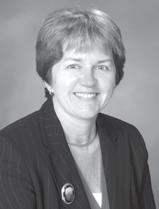



By thoMaS grillo ContriButing Writer
SOUTHBOROUGH – For the Rev. James Flynn, there wasn’t a moment when he decided to join the priesthood.
The 85-year-old pastor of St. Matthew in Southborough said it was a series of reflections since he was a teenager and not a “calling” that brought him to the church.
“It evolved,” Flynn said. “God didn’t come down and sit on my shoulder and whisper in my ear. My Catholic education had a substantial impact on me. I had tremendous admiration for the priests and nuns in Arlington where I grew up. And my mother, who attended daily Mass, had a tremendous faith and that dramatically affected me.”
On June 9, Flynn and the St. Matthew community celebrated the 60th anniversary of his ordination into the priesthood.
Patricia Lally, a longtime parishioner, said when Flynn joined the parish in 1993, there were fewer than five dozen families and it was losing members. Today, she said, there are more than 600, and it’s all thanks to Flynn.
“In addition to Southborough, parishioners come from Northborough, Berlin and Holliston all because of Father Flynn,” she said. “He’s brought so many teenagers back to the parish. The thing that strikes me the most is he lives in the real world; he understands people and treats everyone so kindly. If you need somebody for support, he’s there for that.”

Rev. James Flynn celebrated the 60th anniversary of his ordination on June 9 at St. Matthew parish center. (Photo/Thomas Grillo)
The other factor, she said, is Flynn has mastered the 35-minute Mass and is convinced the briefer the sermon the better.
“One time, my son, who was a teenager at the time, actually timed the Mass,” she recalled. “And when Mass was over, Father Flynn asked him, ‘Was I fast enough for you?’ ”
Flynn has a unique ability to relate to persons of all ages, Lally said.
“If you need a good laugh, he’s there to laugh with you,” she said. “And he brings God, which is his job, into the picture in a very simple and understanding way.”
Born in 1938, the son of Robert J. and Helen Fly-

Within the building amenities include:
• A Theater-like media center
• Handicap-accessible lounges on every floor
• Library equipped with two computers and free internet access
• Physical fitness center
• Game room with billiard table
• Community room with bingo board and large screen TV
27 Mount Vernon Street, Worcester, MA • O ffice O pen D aily 8:00 am - 4:30 pm
To receive an application please call 508-755-6062 TDD# 508-755-0228
Now accepting applications for 62 years of age and older and those who are under 62 years of age and are permanently disabled.
Applicants must meet HUD annual low income guidelines. Preference is given to individuals 62 and older.
nn, he attended Elm Bank, the Stigmatine Fathers’ seminary in Wellesley, and graduated from Catholic University of America in Washington, D.C. with a BA in 1960 and a graduate degree in theology four years later.
He was ordained at the Basilica of the Immaculate Conception in Washington, D.C., in 1964. After his service as a lecturer in religious studies at Catholic University, he was appointed dean of students for the Stigmatine Fathers, while directing the guidance department of the former Elizabeth Seton High School in Wellesley.
In 1980, he received a doctorate in the history and philosophy of education from Boston College. His goal, Flynn said, was to teach.
“I never thought I would serve in a parish and to tell you the truth I didn’t want to,” he recalled. “But my experiences in a variety of parishes, where for the first time I went to people’s homes to anoint them, were extraordinary.”
Among the problems facing the Catholic Church today, Flynn said, is the number of priests is shrinking, in part, because marriage is prohibited.
Between 1970 and 2023, the number of priests has declined by 3% despite a large increase in the number of Catholics, according to the Vatican. One of the major reasons, Flynn said, is celibacy. He favors allowing priests to marry and also supports the ordination of women.
“Women should be equal to men in the Catholic Church,” he said. “They have made tremendous contributions and deserve to be on par with men.”
• Contemporary styled 1 & 2 bedroom apartments
• New kitchens with built-in microwaves and granite-like countertops
• Small pets welcome
• Heat and Hot water included
• Bus route / ample parking
• Beautiful landscaped grounds with gazebo




By Sharon oliver ContriButing Writer
BOSTON – Martin Scorsese’s 2010 thriller “Shutter Island,” starring Leonardo DiCaprio, Ben Kingsley, and Mark Ruffalo, was centered around an asylum for the criminally insane and filmed, in part, on Peddocks Island in Boston Harbor. Interesting how art can often imitate life somewhat.
In truth, the Boston Harbor islands have been used to host various outcasts and as a dumping ground over the years. This includes prisons, quarantine stations, almshouses, homes for unwed mothers, and more. The Long Island Hospital, for example, was established in the harbor in 1893 but by 1903 it had also established an unseemly reputation due to a steady complaint of patient mistreatment.
A few of the Boston Harbor islands are now gone, while others are currently carved out as parks, sanctuaries, and/or tourist attractions. All of them have a not-so-pretty past.


Deer Island
This popular recreation destination features a hiking and biking trail that encircles the land, is reachable
Colony Retirement Home III is congregate housing for seniors. Enjoy nutritious “Home Cooked Meals,” served in our attractive dining room with your neighbors and friends.
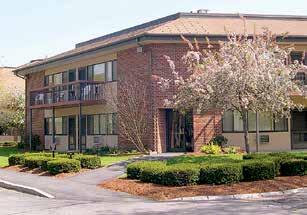
by vehicle or boat, and is a popular spot for plane spotting. But in 1677, it was commonly used as a quarantine station for smallpox cases, and most
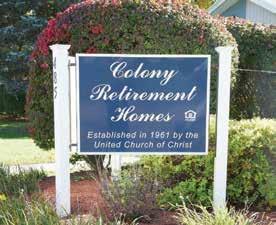
apartments
Spectacle Island in Boston Harbor, once a quarantine hospital, is now a 114-acre recreational area with a beach, hiking trails, and a visitors’ center with a café and a marina.
prominently in the late 1840s as a large number of Irish refugees arrived, many of whom were already suffering from dysentery and typhus. A few

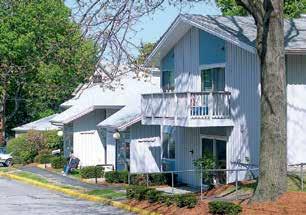
Call Monday thru Friday, 9am to 5


years later, the facilities expanded to accommodate an intake of criminals, delinquents, and paupers. In 1938, a hurricane filled the channel between Deer Island and the mainland.
The granite archways that currently welcome visitors once greeted guests of a different type. The Civil War-era fort is the island’s main attraction which used to be a home for political and Confederate prisoners. And if you believe in ghost stories, there is the legend of “The Lady in Black.” Reportedly, author Edward Rowe Snow created the myth of the ghost of a Confederate prisoner’s wife who was allegedly sentenced to death for aiding in an escape while disguised as a male soldier, and hanged in a black robe which was the best soldiers could do to carry out her request of being executed in female clothing.
During the Civil War, a military camp housing 3,000 Union soldiers was on the island and a hospital for immigrants was built there in 1866. Additions to the hospital were built in 1872 for cholera and yellow fever patients and again in 1878 for passengers suffering from “ship fever,” also known as epidemic typhus. During World War I, it was used as an infirmary for American soldiers who contracted Spanish Influenza and pneumonia, and by World War II it was occupied by a radio school along with a school for bakers and cooks. In 2018, a winter storm exposed the forgotten graves of smallpox victims.
Noddle’s Island
This island no longer exists but once was the site of a hospital for the French naval fleet and as an inoculation hospital during a smallpox out-
break in 1764. Since variolation inoculation against the pox was deemed dangerous, it also separated the inoculated from the anti-inoculation public. In 1802, 19 children who were vaccinated with cowpox were sent to Noddle’s hospital to be exposed to smallpox patients. Although none of them developed smallpox, the experiment was done without anyone’s consent.
Over 100 Civil War veterans were buried on Rainsford Island. However, most people interred there were poor or had died after treatment in the island’s hospitals and many were buried in mass graves. At various times between 1737 and 1925, the island served as a quarantine hospital and a graveyard for the diseased and criminals. Even after public health practices improved, the island continued to operate as a site to send delinquents, the indigent, the mentally ill, and unwed mothers.
In June 2006, Spectacle Island opened to the public as a recreational area with a beach, hiking trails, and a visitors’ center with a café and a marina. Nearly 300 years ago, the only thing that existed there was a quarantine hospital after a British ship arrived in the harbor with smallpox cases onboard. When Puritan minister (at the time), Cotton Mather advocated for a primitive method of inoculating people against smallpox, it sparked threats from an angry mob and was the beginning of the anti-vaccine movement in America.
Several of the islands can be visited by ferries that run from downtown Boston.
For more information about ferry schedules and visiting the Boston Harbor Islands National and State Park, go to bostonharbornow.org.

A reverse mortgage gives qualified borrowers, 62 years old or older, the option to receive cash as a lump sum, a monthly check for life, and/or a line of credit that grows every month with NO required monthly principal & interest mortgage payments. All guaranteed by the federal government. You are, of course, responsible for your real estate taxes, insurance, and meeting other loan guidelines.
By not having a monthly mortgage payment, hundreds of thousands of eligible homeowners have utilized a reverse mortgage to:
• Receive tax free monthly cash for life
• Pay off a current mortgage or home equity line
• Payoff credit card debt
• Pay real estate taxes & property insurance
• Complete desired home repairs
• Finalize divorce situations or other legal matters
• Only one spouse needs to be 62 years old
• Gain peace of mind knowing that cash is available if ever needed
• And the list goes on!
NO monthly payment is required
You continue to own your home
Only one person needs to be at least 62 years old Easier to qualify for than a conventional loan You may receive cash when needed There is no cost to learn!
A reverse mortgage might not be the magic wand to solve every life challenge, but it very well could be the next best thing. Take the first step and get informed. I have helped hundreds of people and would enjoy the opportunity of having that conversation with you over the phone or in person.

Alain Valles Reverse Mortgage Specialist 781-724-6221
A great place to start is get your free “How to Use Your Home to Stay at Home” 36-page book. This is the official reverse mortgage consumer booklet approved by the U.S. Department of Housing & Urban Development and published by the National Council on Aging.
To receive your free copy, please call or text me at (781) 724-6221 or email me at av@powhse.com
I am also available to evaluate your specific situation, answer your questions, and calculate how much money is available to you.
Alain Valles was the first designated Certified Reverse Mortgage Professional in New England. He obtained a Master of Science from the M.I.T. Center for Real Estate, an MBA from the Wharton School, and graduated summa cum laude from UMass Amherst. He is the senior reverse mortgage loan officer MLO#7946 at Powerhouse Funding Corp. NMLS #1740551. He can arrange but does not make loans. Alain can be reached directly at (781) 724-6221 or by email at av@powhse.com
By Sharon oliver ContriButing Writer
BOSTON – America’s inner cities were rife with civil unrest during the 1960s and 1970s. In fact, it was one of the most turbulent and divisive decades in world history, scarred by political assassinations, the Vietnam War, antiwar protests, and the birth of the civil rights movement. Boston also had escalating issues with school busing and other desegregation efforts that caused even more divisions. Nevertheless, there would be a solution to help tamp down the rising tempers — at least during the summer months.
From neighborhood festival to large concerts
Founded in 1968, Summerthing expanded from a neighborhood festival to major concerts at large venues like the Boston Common, White Stadium, and Harvard Stadium. The cultural bonanza provided opportunities for creativity in individual communities. An extension of the

newly-elected Mayor Kevin White’s neighborhood-by-neighborhood approach to campaigning, Summerthing began with murals, plays, concerts, performances, and public art in public places.
The much-anticipated summer music and crafts festival occurred throughout Boston neighborhoods from the late 1960s until the late 1970s.
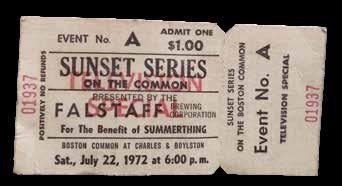
Summerthing concerts eventually featured many national performers like The Grateful Dead, The Supremes, The Allman Brothers Band, Jimi Hendrix, and Van Morrison.
Everything from cars to flatbeds and pickup trucks was used to transport equipment to set up stages in neighborhood playgrounds and fields. It was a great chance to see or participate in cultural events many could not normally afford.
A staff of nearly 2000 volunteers, coordinators, program directors, and teachers helped make Summerthing
Now accepting Applications for 62 years of age and older and those that are under 62 years of age and are permanently disabled.
• Heat and hot water included
• Qualified Applicants pay 30% of adjusted income
• 24 hour emergency maintenance
• Non-Smoking Community
• Monthly activities include: exercise classes, birthday parties, book mobile, blood pressure screens and podiatry
• Manicured walking paths with garden plots
• Ideally located in Natick residential bus route • Pets okay under 20 lbs.


a success by providing entertainment and workshops to over half a million Boston youths in its first year. By the eighth year, there had been approximately 1,000 performances and 500 workshops. National attention drew national acts and big names drew big crowds. Opera singers appeared in the North End. There were kung fu demonstrations from Chinatown to Dorchester. Irish artists appeared in South Boston and R&B singers like Aretha Franklin, Roberta Flack, Patti LaBelle, and The Delfonics along with local musicians brought their sound to Mattapan and Roxbury.
Final Janis Joplin concert Summerthing would also be where legendary belter Janis Joplin last performed. South End resident Kevin McElroy, who was 19 at the time, recalls being just yards away from her during a delay due to waiting on equipment. According to McElroy,


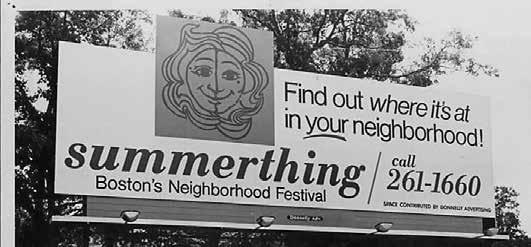
Joplin was “in her own world,” drinking Southern Comfort next to the stage.
By 1970, and with the sponsorship of Schaefer Brewing Company, the festival morphed from being small concerts in neighborhoods often featuring local acts to national performers on the Boston Common or at Harvard Stadium. For $2 or $3, locals could see and dance to the music of Ike and Tina Turner, The Grateful Dead, The Supremes, The Allman Brothers Band, Jimi Hendrix, and Van Morrison even though promoters wanted to charge $10 for the counterculture experience.
Attendees reminisce
Several people wrote in a Facebook Summerthing group what they remembered or learned about those days.
Beth Jones posted:
Founded in 1968, Summerthing expanded from a neighborhood festival to major concerts at large venues like the Boston Common, White Stadium, and Harvard Stadium.
“My mom and my grandmother went there. They used to talk about seeing Rod Stewart there.”
Don Brown added:
“Loved Summerthing … Was able to see (and meet) many of the performers like The Five Stairsteps, Brenda & The Tabulations, and knew some of the local talent like The Ambitions … Too bad there’ll NEVER be anything like it anymore …”
William Napper was a young boy at the time, always looking forward to the Summerthing coming to his area (Columbia Point in Boston near Bayside shopping mall at the time). He stated, “With all the racial tension at the time I believed it helped me focus on what I loved the most … music. I got into DJ’ing and developed a love for
jazz. Imagine that as a young nine to 12-year-old boy. My mom would never let me and my siblings miss a show. Especially me; my siblings enjoyed playing with their friends in the midst of the grown-ups but I always was into the music. Still am.”
Unfortunately, the Summerthing concert series was not without its incidents or budget and bureaucracy woes, forcing it to fizzle out by the decade’s end in the seventies. However, its spirit lives on with every Boston concert and cultural celebration.
‘I just do it out of love’
Petrucci | from page 8
nity. That is infectious — that level of appreciation. It infected me, and I just want to carry that on.”
“I’m honored to nominate Melanie Petrucci as a 2024 Commonwealth Heroine,” said Kane. “Her willingness to help in any way she can has made our community stronger, and I am grateful for her incredible passion for Shrewsbury.”
In particular, Petrucci aims to preserve Shrewsbury’s history. Growing up in Colorado, where the history is much newer, she always imagined the East Coast as a bucolic, historic community. While the town has grown in the last 24 years, she fell in love with Shrewsbury’s “vibe” and works tirelessly to preserve what she can, including the “charming architecture.”
By Marianne Delorey, Ph.D.
We are greater than, and greater for, the sum of us.
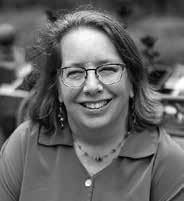
Diversity, Equity, and Inclusion have stirred up a fair share of controversy in political circles. The topic may be even more sensitive for older adults because it is hard to hear that ‘the way you’ve always done things’ may be contributing to the problem. Also, they may feel like they (or their generation) are being blamed exclusively for inequities. Of course, no one person or one generation created our world so no one should bear complete blame.
However, it would be futile to not consider the historical context of inequities when trying to make our corner of the world better. For instance, in our world of housing, we are keenly aware that the effects of redlining are still alive in Worcester. Poverty in the city is still concentrated in the same neighborhoods that were affected by the disenfranchisement of the past. Not
surprisingly, the color of the skin of our residents tends to follow this pattern and people from other neighborhoods of Worcester do not automatically feel at home within our walls. The purpose of a thorough DEI examination of our industry is to say, I can’t fix the past, but I can make it better going forward. I can, at a minimum, make sure we have as welcoming a community now as we can create. For us, this means:
a. Reaching out to people who may be able to help me understand other perspectives
b. Hanging signs welcoming everyone
c. Making sure certain documents are translated
d. Putting on a multicultural festival to shine a light on other groups
e. Addressing any known barriers (like stairs for people with mobility impairments)
At a company level, many companies are embracing DEI initiatives under the premise that incorporating many ways of looking at the world make decisions stronger. I have seen
~ Heather McGhee
this in action. The choices I make are limited by my experiences. People with vastly different values and ideas can help me see a more complete world. This additional knowledge and perspective made my decisions stronger and better.
We, as an agency, have been grappling with DEI issues for several years. Here are the three most important lessons I have learned about our journey thus far:
1. These topics are going to make you uncomfortable — Reliving times when people have not been treated fairly to see what impacts it has on today is distressing. Being willing to sit and listen to difficult stories (sometimes when you or your ancestors had a hand in creating part of the problem) is at least in part about embracing discomfort and living with a history you cannot change.
2. Sometimes there is no answer; sometimes just discussing the issue is enough. As noted above, we can only control so much. Under-
“Having access to all these historical properties — they help build our way of life. You have to preserve it,” she said.
All of the work — everything she has done — has made her a Commonwealth Heroine.
“I just felt proud. I immediately shared the news with my daughters. I just wanted to share it with them and say, ‘Look what your mom has done.’ I also thought of my mom, and she’s no longer with us, I just think that she’s up there smiling, proud of what I’ve accomplished. When you add everything up I’ve done — sure — but I’m just going through my life, doing what I like doing, and if it makes a difference, that’s a goal, but I just do it out of love,” she said, also thanking her husband for his support.
standing there has been inequity is a basis for building empathy, which from my vantage point, is the most important part of the process.
3. Start by taking baby steps, but start. This is important work. There isn’t a magical list of items that you can tick off like a to-do list. Each aspect of the agency needs to be examined for concerns. The purpose is to fix what you can today but also to set tomorrow up for better equity. If you don’t know where to start, hire an expert. There are people who have already done this work for others; why reinvent the wheel when they can walk you through many next steps.
I, for one, recognize that we have only just begun to change our organization for the better. We will never be perfect, but I will keep trying to make Colony as fair as possible in a world that hasn’t always valued equity.
“Creating and managing a diverse workforce is a process, not a destination.” ~ R. Roosevelt Thomas, Jr. Marianne Delorey, Ph.D., is the executive director of Colony Retirement Homes. She can be reached at 508755-0444 or mdelorey@colonyretirement.com and www.colonyretirementhomes.com.
By JaniCe linDSay ContriButing Writer


At first I thought I was speaking with Mother Nature herself. I had phoned Mother Nature’s Florist and a woman answered. Who else could she be?
But I soon realized that this woman was an imposter. I had phoned to order flowers for a couple about to celebrate their fiftieth wedding anniversary. I requested a basket of daisies because, I explained, they were married when wild daisies were blooming and they must have seen daisies on their way to the wedding.
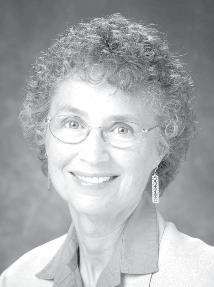
The real Mother Nature would love that idea.
The phony Mother Nature showed no interest. I’m sure she knew all about gorgeous cultivated blossoms growing in her greenhouse or shipped there in refrigerated trucks. But probably, on her way to work, she didn’t notice the hundreds of wildflowers that the real Mother Nature has sprinkled along New England roadways, blossoms that are cheerful, varied, and resourceful. Anybody can enjoy them. For free. All you have to do is look. Consider the wildflowers. They grow without
human help. Each finds its own little niche — moist or dry soil, sun, shade, forest, meadow, beach, riverside, mountaintop, sidewalk crack. Isn’t it miraculous that, while millions of seeds must fall in inhospitable places, so many find exactly the right spot?
And so many have chosen to grow near my very own house! Violets, buttercups, star flowers, clovers, blue-flag iris, daisies, yarrow, Queen Anne’s lace, asters, goldenrods, and so many more. They blossom generously, whether any human person cares or even sees them. All they require from me is: Nothing. Don’t cut them down, don’t pull them up.
So I admit that I, in my comfortable shoes and practical hat, on roadside or on trail, I might stop when I spy a blossom I can’t immediately identify. In the past, I traveled with a flower book. Now I snap a photo with my phone and take it home to the books. There are apps that identify a wildflower on the spot: I haven’t added one of those yet. (I have only the app for birds, but that’s another story.)
Wildflowers can be so confusing. My beginner’s wildflower book offers 658 photographs of flowering plants common in eastern North America. The more advanced book illustrates 1,553 “of the most common species” in North America; that is, only the most common 1,553 species, figuring that a normal person
doesn’t need to be able to identify 50 kinds of sunflowers or 81 types of buttercups.
Still, I crouch beside the road examining a tiny white daisy-like flower with long thin petals, snap its photo, and can’t find it in my books.
Sometimes I stop worrying about the flower’s name and just enjoy its company.
Speaking of names, Mother Nature might have designed the wildflowers, but she must have had human help naming them, help that was not always that helpful. We have lovely, flowing names that delight both the tongue and the soul, like day lily, forget-me-not, and Canada mayflower. But it’s disappointing to spot a cluster of tiny white five-point-star blossoms shining in a thicket and discover that it’s called bastard toadflax. And who named cow vetch? Or the silver-leaf scurf pea? Or the spiny-leaved cow thistle?
I wish I could reach the real Mother Nature on the phone. I’d ask if she would like help re-naming some of her colorful creations. But the big question I would ask is the same question I ponder when I consider our amazing varieties of birds, fishes, insects, and other wild creatures. Why did she think we deserve so many?
Contact jlindsay@tidewater.net


By Sharon oliver ContriButing Writer
REGION – One of America’s favorite pastimes has always been going to a theater to catch the latest flick and devour a bucket of heavily buttered popcorn. Why not? Part of the moviegoing experience is to laugh, cry, howl, and flinch along with family members, friends, and strangers while enjoying a good cinematic motion picture.
However, things have changed over time. The price of tickets continues to increase and thanks to streaming services, movies become available on the small screen faster than you can grab the remote. But even without discounts, some theaters have diversified and added to their offerings beyond just a screening of the movie.
A mystery movie for the adventurous
On the other hand, the over-60 audience in particular now has several reasons to flock to the nearest theater for an afternoon or evening of viewing fun. For example, AMC offers guests over 60 a senior discount ticket option. Also, be on the lookout for AMC’s Screen Unseen limited-time offer program, where film presentations remain a mystery until the lights go down and cost only $5 plus tax. Regal theaters offer the over-60 crowd ticket discounts as well.
Showcase Cinemas has a Senior Wednesdays deal for 60-plus viewers wherein they pay $7.75 to watch a movie and popcorn with a fountain drink costs only $5.50. Some Showcase theaters have sensory-sensitive screenings allowing guests to sit back and relax in a comfortable setting where the volume is lowered. Their Massachusetts Starpass members pay only $5 on Bargain Tuesdays. Also, check out their Mom’s Movie Night, which features admission to a movie of your choice and a pre-party in one of their Lux Level lounges or restaurants for hors d’oeuvres.
General admission prices for tick-



The over-60 audience in particular now has several reasons to flock to the nearest theater… AMC offers guests over 60 a senior discount ticket option.
ets at Cinemark theaters allow people aged 62 and older to save up to 30 percent and even more on Senior Day at select locations. The indie theater chain Landmark Cinemas offers a special Senior’s Day discount every Monday. You receive 20 percent off both tickets and concessions. Their motto is “A Great Deal Never Get Old.”
Brookline’s beloved Coolidge Corner Theater offers some interesting perks no matter what your age is. As part of their Big Screen Classics program, they offer seminars about select film screenings and the Coolidge Education classes focus on particular subjects such as early films of “Master of Suspense” filmmaker Alfred Hitchcock. Tickets for the Coolidge Education one-night seminar are priced at $27.50 ($25.50 for Coolidge members
and students) and include a 30-minute lecture and reserved seating for the film screening.
Their Open Screen is an open mic
event for budding filmmakers. Share your film, projected in a dark room before a group of attendees. As long as your movie is under 10 minutes, they will screen it. There certainly is a lot to take advantage of at this Art Deco movie palace where all things cinema and beyond are celebrated. It is indeed a cultural institution.
Not to be outdone, Waltham’s Embassy Theater’s Movie Club Members can enjoy a movie on Tuesdays for only $7. Amherst Cinema also has a list of opportunities for film enthusiasts. Designed as a communal and conversational experience, their Cinema Seminars offer participants the chance to explore and foster new understandings of film within historical and cultural contexts. Amherst’s A Thousand Words series “invites writers, poets, and novelists to ask guests to program a film accompanying a discussion around their use of the written word in relationship to the moving image.”
Whether it’s a national chain or independent theater, going to the movies is no longer just about watching the latest romcom, thriller, or comedy. Moviegoers can now participate in various programs, learn from a variety of classes, share their own projects in film, or just take advantage of the discounts.




Trust Our Family With Your Family
Are you or a loved one in need of top-quality home care services?

Contact us today to see how we can help! info@trustedlikefamilyhomecare.com • 508-579-1890 www.trustedlikefamilyhomecare.com and disabled adults in Worcester County
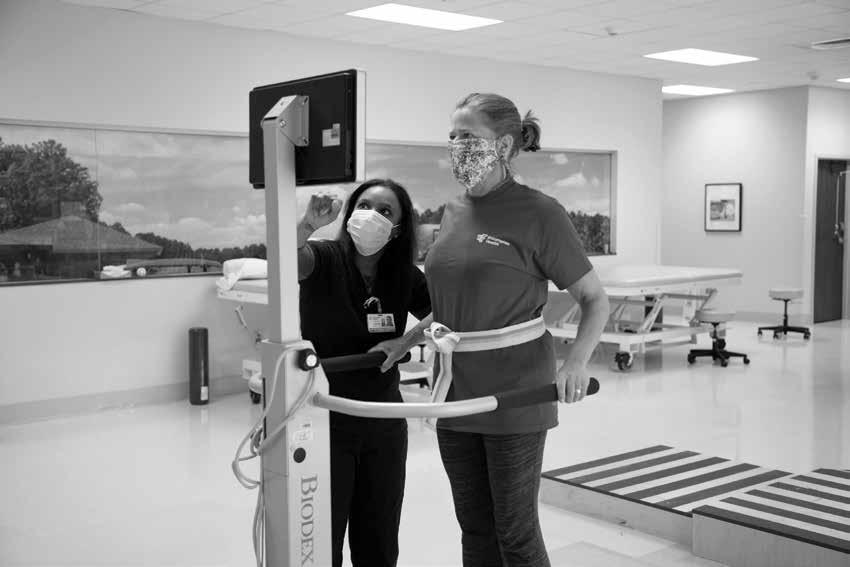
• Locally owned and managed – fully insured and bonded
• Client satisfaction and service are our top priorities!
By Sharon oliver ContriButing Writer
BRAINTREE - When fish peddler Bartolomeo Vanzetti and shoemaker Nicola Sacco immigrated from their native Italy to the United States in 1908, it is hard to imagine them having ever envisioned themselves as the center of a landmark court case. After all, the Statue of Liberty (the “Mother of Exiles”) had welcomed them and other tired, poor, and huddled masses yearning to breathe free. Nevertheless, the pair would find themselves embroiled in a murder trial that received almost worldwide attention less than 20 years later and their freedom would be fleeting.
Shoe factory robbery
In 1920, Alessandro Berardelli, a guard, and Frederick Parmenter, a paymaster, were killed during an armed robbery of the Slater and Morrill Shoe Company in Braintree. Sacco and Vanzetti were accused, arrested, brought to trial, and convicted for the murders. Calls from academics and artists for their pardon or a new trial grew loud. Harvard law professor and future Supreme Court Justice Felix Frankfurter argued for their innocence in an Atlan-









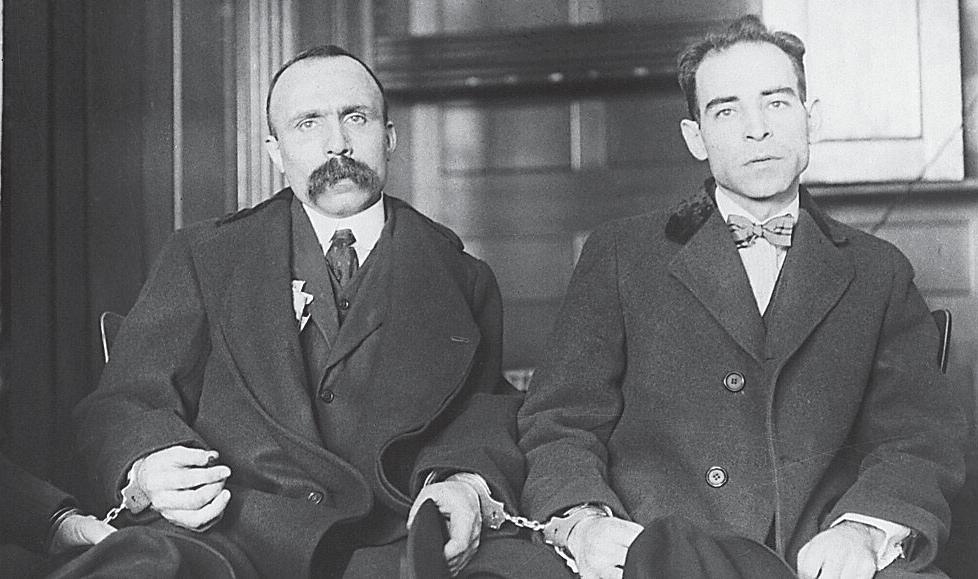
tic Monthly magazine article.
Four months before their execution in August 1927, 97 years ago this month, Vanzetti released a statement to the court:
“This is what I say: I would not wish to a dog or to a snake, to the most low and misfortunate creature of the earth — I would not wish to any of them what I have had to suffer for things that

I am not guilty of. But my conviction is that I have suffered for things that I am guilty of. I am suffering because I am a radical and indeed I am a radical; I have suffered because I was an Italian, and indeed I am an Italian; I have suffered more for my family and for my beloved than for myself; but I am so convinced to be right that if you could execute me two times, and if I could be reborn two other times, I would live again to do what I have done already.”
Unrest and controversy
Shortly after the executions, the Massachusetts Judicial Council cited the Sacco and Vanzetti case as evidence of “serious defects in our methods of administering justice.” Protests erupted in the United States and Europe. As one act of retaliation, bombs exploded at American embassies all over the world including Paris, wounding the valet to the American ambassador. Reportedly, more than 10,000 mourners came to view the bodies of Vanzetti and Sacco at Langone Funeral Home in Boston’s North End.
Crime boss Frank “Butsey” Morelli and his brothers were long suspected of being involved in the robbery and mur-
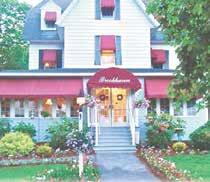
This
is what I say: I would not wish to a dog or to a snake, to the most low and misfortunate creature of the earth — I would not wish to any of them what I have had to suffer for things that I am not guilty of.
Bartolomeo Vanzetti
ders and in 1973, a former mobster published a confession by Frank’s brother Joe: “We whacked them out, we killed those guys in the robbery. These two greaseballs Sacco and Vanzetti took it on the chin.”
Opinions remain divided as to their guilt or innocence or if they were victims of a prejudiced legal system and a mishandled trial. Some believe Sacco was guilty, but that Vanzetti was innocent. Several historians believe the two men should have been granted a second trial given their trial’s significant defects. On the 50th anniversary of the deaths of Bartolomeo Vanzetti and Nicola Sacco, then-governor of Massachusetts, Michael Dukakis, issued a proclamation declaring the men had not been treated justly and that no stigma or disgrace should be associated with their names. Despite the complex history of immigration, the nation was built on the backs of immigrants, descendants of immigrants, and slaves. Discussions and actions regarding immigration continue to be heated and divisive. There continues to be a heavy dose of tension and discrimination directed towards immigrants in some circles, some of whom are automatically targeted as criminals. Nearly a century later, the Sacco and Vanzetti case in Massachusetts continues to highlight issues of injustice, due process, and treatment of immigrants in the United States.
By Sharon oliver ContriButing Writer
BOSTON – In 1776, Abigail Adams wrote to her husband: “Remember the ladies and be more generous and favorable to them than your ancestors!”
Over a century later and after thousands of phenomenal women have left their mark, the people of Boston are doing just that. The Boston Women’s Heritage Trail is a series of walking tours that lead past sites of important women in history, many of whom are household names. These neighborhood tours include Back Bay (East), Back Bay (West), Beacon Hill, Charlestown, Chinatown/South Cove, Dorchester, Downtown, Jamaica Plain, Lower Roxbury, Roxbury, West Roxbury and South End.
Strolling down the cobbled and/or tree-lined streets is more than a mere exploration on a sunny afternoon. It’s a chance to visit history more vibrantly. For example, The Road to the Vote: The Boston Women’s Suffrage Trail was created to celebrate the 100th anniversary of the 19th Amendment (women’s right to vote), of which Boston’s suffragettes played a huge part in the adoption of the constitutional amendment. It honors women like Mary Kenney O’Sullivan, who wrote a circular which was distributed by the National American Woman Suffrage Association. It was called “Why Working Women Need the Vote,” arguing that if women had the right to vote they would get equal pay for equal work. She once lived on Tyler Street, a few blocks from modern-day South Station.
A walk on the North End tour is an opportunity to visit the restored Paul Revere House, where the famed folk hero’s second wife, Rachel, helped raise Revere’s six children from his first wife and bore another eight children. One notable figure from Beacon Hill is Dr. Rebecca Lee Crumpler, the first African

The Boston Women’s Memorial on Commonwealth Avenue honors three women—Abigail Adams, Lucy Stone, and Phyllis Wheatley.
American woman to receive a medical degree.
The Boston Women’s Memorial honors three women — Abigail Adams, Lucy Stone, and Phyllis Wheatley — whom millions of people everywhere have revered for centuries. Thanks to the Talking Statues app, visitors can hear recordings of words written by the three famous women. From there, you can take the Ladies Walk to see where the women lived and worked.
Other points of interest on this walk are the Old South Meeting House, where Phyllis Wheatley attended worship, and the Boston Public Library Bates Reading Room where busts of Lucy Stone and her daughter Alice Stone Blackwell sit together on top of the mantel.
Food as a theme
Another excursion worth noting is the Women Feeding Boston Tour, a thematic trail consisting of three subtrails that can be toured online or in person by driving, renting a bike, or hopping on the T.
The Public Foodways Trail takes visitors through the history of public dining in Boston and how women have produced and prepared meals for residents of this area for centuries.
The Food Advocacy Trail focuses on the inequality of access to food in Boston. Working as advocates, women recognized on this sub-trail have pro-

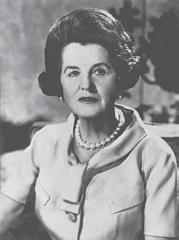

Left: Rose Kennedy, matriarch of the Kennedy family political dynasty, is one of the women featured on the Women’s Heritage Trail in Boston.
Right: Clementina Poto Langone, a civic leader from the North End of Boston, is remembered for her service to the Italian-American community.
vided food for those in need.
The Education Trail focuses on how these women introduced the significance of and the skills necessary to prepare food. They are featured in
cookbooks, scholarly writings about food, and educational food and nutrition programs at institutions in Boston.
From household names to lesser-knowns
The Boston Women’s Heritage Trail highlights the work of women, from household names like Rose Kennedy (matriarch of the Kennedy family political dynasty) to less-known leaders like Julia O’Connor, a labor leader and head of the National Telephone Operators’ Department of the International Brotherhood of Electrical Workers (IBEW).
Another lesser-known name is Clementina Poto Langone, a civic leader from the North End neighborhood who is remembered for her service to the Italian-American community. During the Great Depression, she was dubbed as a “Good Samaritan” who distributed food and clothing to the poor and advocated for them politically. Langone was also a member of the Massachusetts Board of Immigration and Americanization and helped hundreds of Italian immigrants assimilate and obtain U.S. citizenship.
For more information about the Boston Women’s Heritage Trail, visit https://bwht.org.

When it comes to your final arrangements...
By Sharon oliver ContriButing Writer
REGION – Every living generation is familiar with the 1939 film classic “The Wizard of Oz” and how Dorothy and her family, albeit as alter egos in the Land of Oz, were transported from their Kansas home. Interestingly, some of the cast members were either natives of, educated in, or worked in Massachusetts. L. Frank Baum had no way of knowing his popular children’s book would finally be adapted into a movie after several attempts at making that happen. He died in 1919 after suffering a stroke.
Also, who could have guessed so many of the actors would hail from Massachusetts? The state can be proud to claim the following people as one of their own.
The Scarecrow Ray Bolger played the part of the Scarecrow, one of the most prominent characters in the movie. Born in Fall River in 1904, Bolger was raised in a family of performers. He attended school in the Codman Square section of Boston’s Dorchester neighborhood.




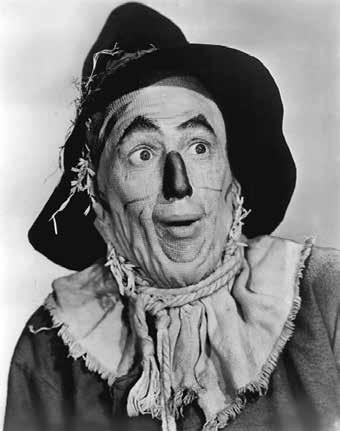
Ray Bolger, who played the Scarecrow in “The Wizard of Oz,” was born in Fall River and educated in Dorchester’s Codman Square neighborhood.
Tin Man
A total of nine cast members from the classic film “The Wizard of Oz” had ties to Massachusetts.
Auntie Em
Clara Blandick rose to stardom for her portrayal as the caring Auntie Em. The daughter of a ship captain, Blandick was born aboard an American ship in Victoria Harbour, Hong Kong, but grew up in Quincy. On April 15, 1962, suffering from years of failing eyesight and severe arthritis pain, she returned home from Palm Sunday church services, laid out her resume and press clippings that covered her acting career. Blandick then took an overdose of sleeping pills, tied a plastic bag over her head, and laid down on the sofa. She left a suicide note which read:
“I am now about to make the great adventure. I cannot endure this agonizing pain any longer. It is all over my body. Neither can I face the impending blindness. I pray the Lord my soul to take. Amen.”
Wicked Witch of the West




No one can forget Margaret Hamilton and her broomstick-chasing antics as the wicked witch of the West. Although the actress was not from Massachusetts, she did attend Wheelock College and later taught kindergarten at the Rindge Technical School in Cambridge.
Oz
Frank Morgan, the great Oz himself, was born in New York City but he became a member of Boston’s Castle Square Theater before testing his fate in Hollywood.
Jack Haley, a native of Nahant, stole everyone’s heart as the Tin Man. He was hired for the role of the Tin Man, originally meant for Buddy Ebsen, after Ebsen’s allergic reaction from inhaling the aluminum powder in his silver face makeup caused him to bow out.
Munchkins
Several of the Munchkins, many of whom outlived all of the major cast members, were also from Massachusetts.
Munchkin City Father
Billy Curtis was born in Springfield in 1909. Aside from playing a Munchkin, he also starred alongside Clint Eastwood in the 1973 western flick “High Plains Drifter” as Mordecai. He was also the fast-food chain McDonald’s Mayor McCheese.
Lollipop Guild member
Lynn native Jerry Maren played the green-garbed guy who handed Dorothy (Judy Garland) a lollipop. Maren was a teenager when he shot his scenes.
Lullaby League member
Olga Nida Carmena Nardone was born in Newton in 1921 and “The Wizard of Oz” was her only screen appearance. Following her promotional appearance on a Munchkinland-themed float in the 1939 Rose Parade, she returned to Massachusetts and resumed her local dancing career.
The Barrister
Lynn native Clarence Herbert Bliss worked steadily in Hollywood from the 1920s through the 1960s. He played the barrister in “The Wizard of Oz.” In one of his interviews, Bliss recalled how his father left the family upon realizing his son’s short stature and how the family lived in awful poverty. Before becoming an actor, Bliss sold newspapers to help make ends meet.
By Sharon oliver ContriButing Writer
REGION – English-Australian melody makers the Bee Gees are widely known for their disco chart-topping success. Their singles “How Deep Is Your Love,” “Night Fever,” and “Stayin’ Alive” from 1977’s “Saturday Night Fever” film soundtrack helped crown them with titles like The Disco Kings and The Kings of Dance Music. Ten years earlier, the Gibb brothers (Barry, Maurice, and Robin) had another hit on their hands.
Early hit
On October 11, 1967, their song “(The Lights Went Out In) Massachusetts” went to number one in the UK and stayed there for four weeks. The song also made the Bee Gees the first non-Japanese act to top the Japanese singles chart, the Oricon Singles Chart, in 1968. Foreign artists had rarely reached number one status and only 12 Western acts achieved such a feat in its first 54 years in existence.
Written by the three brothers, the bittersweet ballad about a man who is homesick and longing to return to the place of his birth—Massachusetts, was originally intended to be given to Australian folk-influenced pop group The Seekers for recording.
Unsurprisingly, there does seem to be a girl involved at the heart of the song, since someone was “left standing on their own.”
How they came up with the song
Remarkably, the brothers had never set foot in the Bay State before having written the song even though Barry Gibb once said in an interview that the song was inspired by memories of America and all the songs they loved from the US, including those by The Beatles.
One report is that the song was written while staying at the Regis Ho-


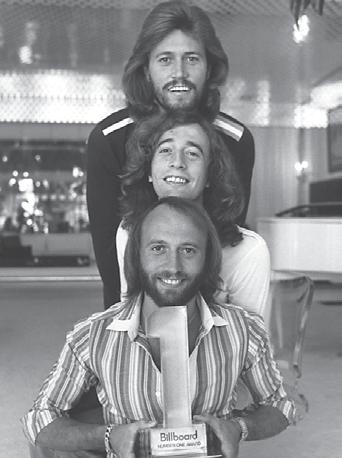
The Bee Gees, pictured here in 1977, are best known for their disco hits on the soundtrack to the movie “Saturday Night Fever,” released that year.

The 1967 hit song by the Bee Gees about Massachusetts went to number one in the UK despite the fact that the brothers had never visited the Bay State.
challenge yourselves to do something; we’d never been to Massachusetts. It’s an unusual title with all the S’s.”
told newspaper The Mail On Sunday, “I remember sitting at the side of the carriage, watching the rain pour down, fireworks go off and blue lights of the ambulances whirring. It was like something out of a Spielberg film. I thought, at least there is one consolation, we have our first UK number one.”
“Massachusetts” was not the Bee Gee’s first hit to include something American in the title. Earlier in 1967, they scored “New York Mining Disaster 1941 (Have You Seen My Wife, Mr. Jones” and then in 1975 the pop-rock band recorded “Nights On Broadway.”
Legacy lives on
The song was featured in the 2019 American crime drama television series “City on a Hill,” starring Kevin Bacon and Aldis Hodge in Season 1, Episode 2, “The Night Flynn Sent the Cops on the Ice.”
tel in New York City. However, Robin Gibb had a different memory. He explained to Daniel Rachel, author of “The Art of Noise: Conversations with Great Songwriters,” “We wrote that in a boat in New York harbor as a challenge. When you look back, it’s quite a good exercise if you are songwriters to





Robin had another memory of the time. He also recalled the date of November 5, when the song was still number one, he was riding a train when it crashed in Lewisham near Hither Green Depot, killing 49 people. It was one of the UK’s worst rail disasters. In November 2009, Gibb
Other artists have covered it as well and it should be noted that The Seekers recorded “Massachusetts” on their “50 The Golden Jubilee Album.”
In a 2011 ITV British television special, “Massachusetts” was voted third behind “How Deep Is Your Love” and “You Win Again” in “The Nation’s Favourite Bee Gees Song.”

